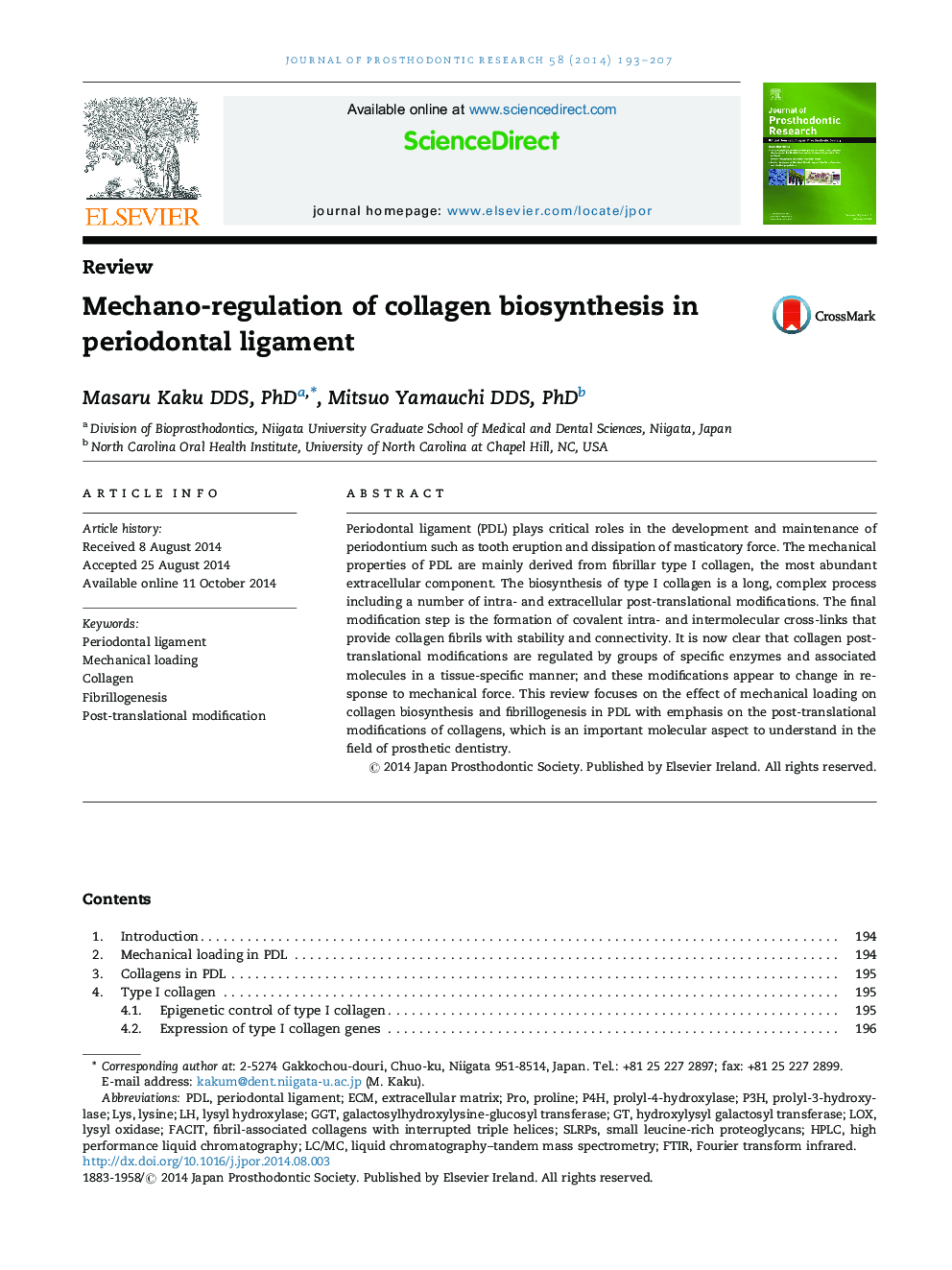| Article ID | Journal | Published Year | Pages | File Type |
|---|---|---|---|---|
| 10167447 | Journal of Prosthodontic Research | 2014 | 15 Pages |
Abstract
Periodontal ligament (PDL) plays critical roles in the development and maintenance of periodontium such as tooth eruption and dissipation of masticatory force. The mechanical properties of PDL are mainly derived from fibrillar type I collagen, the most abundant extracellular component. The biosynthesis of type I collagen is a long, complex process including a number of intra- and extracellular post-translational modifications. The final modification step is the formation of covalent intra- and intermolecular cross-links that provide collagen fibrils with stability and connectivity. It is now clear that collagen post-translational modifications are regulated by groups of specific enzymes and associated molecules in a tissue-specific manner; and these modifications appear to change in response to mechanical force. This review focuses on the effect of mechanical loading on collagen biosynthesis and fibrillogenesis in PDL with emphasis on the post-translational modifications of collagens, which is an important molecular aspect to understand in the field of prosthetic dentistry.
Keywords
SLRPsGGTP4HPDLsmall leucine-rich proteoglycansECMFACITpost-translational modificationLOXMechanical loadingFourier transform infraredPeriodontal ligamentFTIRfibrillogenesisLysineLYSLysyl oxidaselysyl hydroxylaseExtracellular matrixPROProlyl-4-hydroxylaseProlinehigh performance liquid chromatographyliquid chromatography–tandem mass spectrometryHPLCCollagen
Related Topics
Health Sciences
Medicine and Dentistry
Dentistry, Oral Surgery and Medicine
Authors
Masaru DDS, PhD, Mitsuo DDS, PhD,
